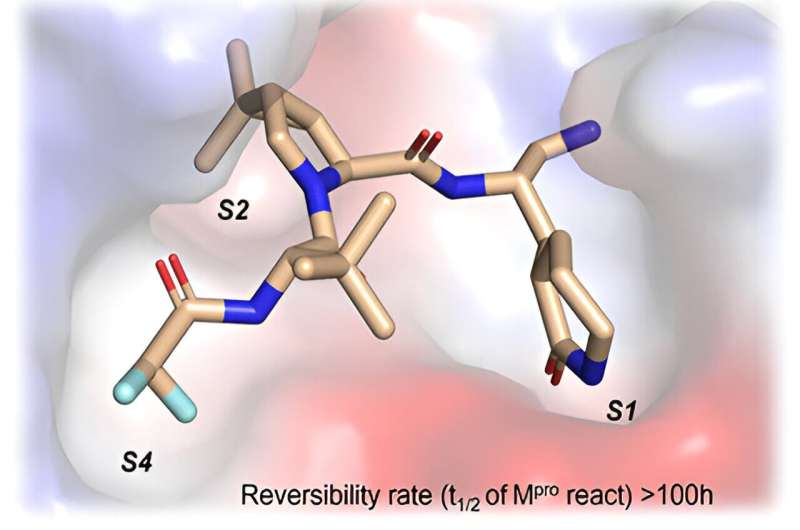This article has been reviewed according to Science X's editorial process and policies. Editors have highlighted the following attributes while ensuring the content's credibility:
fact-checked
trusted source
proofread
Improving antiviral medication for COVID-19 to give more patients access to treatment

Researchers from the University of Alberta (U of A) are working to improve the only oral antiviral approved for COVID-19 infections in the hopes of expanding its use in populations that need it most.
Paxlovid, originally designed by Pfizer, uses a second drug as a metabolic booster to keep the active drug that targets COVID in the bloodstream longer. However, this additive can interact with other medications, so immunocompromised people and people with chronic conditions can't take it.
"If you're taking medications for a cardiac disorder for example, you would not be able to take Paxlovid, so we need to develop second-generation antivirals that could be taken by people that are on other medications, such as those who are immunocompromised," says Joanne Lemieux, professor of Biochemistry at the U of A.
Using the Canadian Light Source (CLS) at the University of Saskatchewan (USask), Lemieux's team was able to visualize the drug's molecular structure in great detail, enabling them to find areas that could be modified.
"The CLS is indispensable to our team," says Lemieux. "Synchrotron technology is an extremely valuable tool for us, especially for small molecule work."
Lemieux and her colleagues have modified a specific area of the molecule in the active drug that enables it to stay in the system—meaning an additional "booster" drug is not necessary. This could help widen the use of the drug and allow more people to safely treat their COVID infection. The team's findings were recently published in the journal ACS Bio & Med Chem Au.
"We decided to explore an area of the molecule that, if modified a little bit, keeps the drug's potency but alleviates its shortcoming," says Alexandr Belovodskiy, Research Associate at the University of Alberta Applied Virology Institute.
Lemieux and her colleagues are continuing their work on novel antiviral drug design to help combat various viruses—from the common cold to other emerging respiratory viruses that could impact human health.
"The CLS synchrotron facility is an essential tool needed to continue the work on antiviral drug discovery in Canada," says Lemieux.
More information: Elena Arutyunova et al, The Effect of Deuteration and Homologation of the Lactam Ring of Nirmatrelvir on Its Biochemical Properties and Oxidative Metabolism, ACS Bio & Med Chem Au (2023). DOI: 10.1021/acsbiomedchemau.3c00039



















